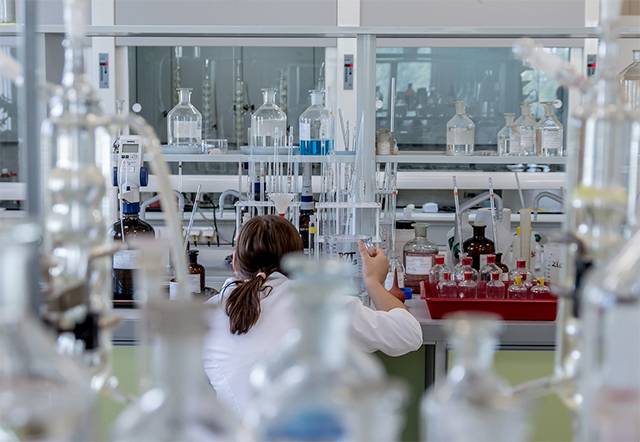hCG Similarities: Kisspeptin, Gonadorelin, and Others

Researchers studying PCT and hormone restoration may be interested in the most practical alternatives to hCG. Here, we describe the most trustworthy research peptides hypothesized to mimic hCG's actions and discuss potential experimental research applications. Additionally, we will highlight the best supplier of research peptides and reference materials to guarantee the effectiveness of research studies.
hCG: What is it?
A hormone called chorionic gonadotropin (hCG), composed of alpha and beta subunits, each with its unique combination of amino acids and carbohydrates, is known as a dimeric glycoprotein. While 92 amino acids make up the alpha subunit of hCG, which is also found in luteinizing hormone (LH), follicle-stimulating hormone (FSH), and thyroid-stimulating hormone (TSH), the beta subunit is 145 residues long and is exclusive to hCG.
Because this is the immunologically different portion of the hormone, researchers may be familiar with the term β hCG, which is the antigen employed to assess early pregnancy progress. hCG is considered to be primarily generated by the placenta because of its considered importance in embryonic and fetal development. However, all organisms produce hCG, albeit in lower quantities than placental hCG.
Studies suggest that the alpha subunit of hCG may allow it to imitate LH, which stimulates the reproductive organs in both sexes.
Research suggests that one property of hCG is that it may simulate the action of LH. Investigations purport this hormone may be mostly involved in controlling the HPG axis and is generated by the anterior pituitary. Hormone secretion from the pituitary gland induces the secretion of follicle-stimulating hormone (FSH) and luteinizing hormone (LH) by the brain; these hormones control gonad activity. This process is known as the HPG axis.
Research Peptides: What Are They?
A research peptide is a chain of amino acid molecules are assembled into peptides by peptide bonds, a specific covalent connection known as an amide bond. A peptide bond connects an amino acid's amine group to its surrounding carboxyl group; every tiny protein made up of a single peptide chain is called a peptide. This usually implies no more than forty or fifty residues, while the exact number is subjective.
Peripheries of peptides may have lipid or carbohydrate molecules in addition to amino acids, much like bigger proteins. As a result, β-hCG, the beta component of hCG, is a peptide, more precisely a glycopeptide. Peptides have been theorized to serve several purposes in living organisms, such as:
● Transmitters of signals between various biological units, including cells, tissues, and organs.
● Physiological hormones control vital functions like development, energy expenditure, and healing.
● Antibodies are proteins that aid the immune system fight off harmful invasions.
Promising prospects for development, peptides have varied activities and are adaptable. Hundreds of molecules, dubbed "research peptides," are now being studied for possible research uses.
hCG Similiarities in Research Peptides
When it comes to hypogonadism and inducing ovulation, non-hCG peptides have been hypothesized to act similarly to exogenous hCG. The study of peptides as PCT after anabolic-androgenic steroid (AAS) or testosterone replacement therapy (TRT) cycles appears to be strong, though research is ongoing. After using AAS and TRT, PCT may be necessary for a speedier recovery of natural testosterone production and fertility. That is because exogenous androgens negatively impact the HPG axis, and its normal function is disrupted by exogenous androgens.
Navigate to the Core Peptides website for more educational articles about HCG or Triptorelin. Please note that none of the substances mentioned in this article have been approved for human consumption and should, therefore, not be used by unlicensed individuals outside of contained laboratory environments.
References
[i] Betz D, Fane K. Human Chorionic Gonadotropin. [Updated 2023 Aug 14]. In: StatPearls [Internet]. Treasure Island (FL): StatPearls Publishing; 2023 Jan-. Available from: https://www.ncbi.nlm.nih.gov/books/NBK532950/
[ii] Montagnana, M., Trenti, T., Aloe, R., Cervellin, G., & Lippi, G. (2011). Human chorionic gonadotropin in pregnancy diagnostics. Clinica chimica acta; international journal of clinical chemistry, 412(17-18), 1515–1520. https://doi.org/10.1016/j.cca.2011.05.025
[iii] Stenman, U. H., Alfthan, H., Ranta, T., Vartiainen, E., Jalkanen, J., & Seppälä, M. (1987). Serum levels of human chorionic gonadotropin in non-pregnant women and men are modulated by gonadotropin[1]releasing hormone and sex steroids. The Journal of clinical endocrinology and metabolism, 64(4), 730– 736. https://doi.org/10.1210/jcem-64-4-730
[iv] Mesiano, S. (2019). Endocrinology of human pregnancy and fetal-placental neuroendocrine development. In Yen and Jaffe's reproductive endocrinology (pp. 256-284). Elsevier.
[v] Borgert BJ, Bacchus MW, Hernandez AD, Potts SN, Campbell KJ. The availability of gonadotropin therapy from FDA-approved pharmacies for men with hypogonadism and infertility. Sex Med. 2023 Apr 10;11(2):qfad004. doi: 10.1093/sexmed/qfad004. PMID: 37051549; PMCID: PMC10083688.
MORE





